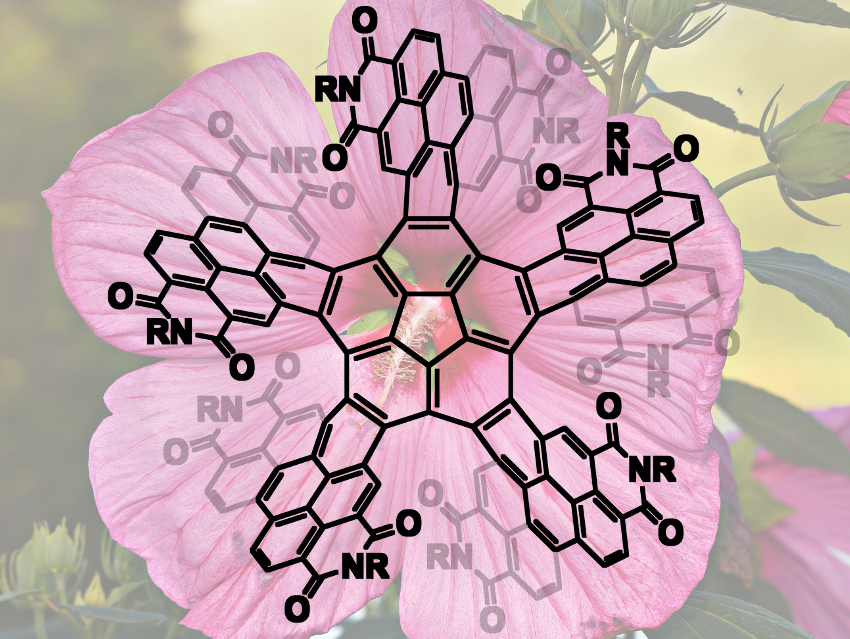Graphenoids, i.e., compounds that are similar to graphene, have applications in catalysis, electronics, energy storage, etc. When rings with either fewer or more than six carbon atoms are embedded in the structure, curved or bent graphenoids are obtained. Combining such curved derivatives with planar ones can lead to interesting and useful compounds.
Yan Li, Beijing National Laboratory for Molecular Sciences and University of the Chinese Academy of Sciences, both Beijing, China, Jay S. Siegel, Tianjin University, China, Zhaohui Wang, Beijing National Laboratory for Molecular Sciences and Tsinghua University, both Beijing, China, and colleagues have prepared a new nonplanar graphenoid compound, corannurylene pentapetalae (CRP, pictured). The compound consists of a curved corannulene core and five planar perylene diimide (PDI) fragments. Its overall shape resembles a five-petaled flower.
The team synthesized CRP by a five-fold Suzuki-Miyaura coupling reaction between brominated PDI and a pentakis(pinacolatoboryl) corannulene, followed by a photocyclic aromatization under an LED lamp. The team obtained different stereoisomers, one with D5 symmetry, in which all “petals” are arranged the same way (pictured), and one with C2 symmetry, where two “petals” deviate up and down, respectively. The D5-symmetric compound forms a honeycomb-like structure in the crystalline state and could be used to facilitate electron transport.
- Corannurylene Pentapetalae,
Dong Meng, Guogang Liu, Chengyi Xiao, Yanjun Shi, Lei Zhang, Lang Jiang, Kim K. Baldridge, Yan Li, Jay S. Siegel, Zhaohui Wang,
J. Am. Chem. Soc. 2019.
https://doi.org/10.1021/jacs.9b00053




